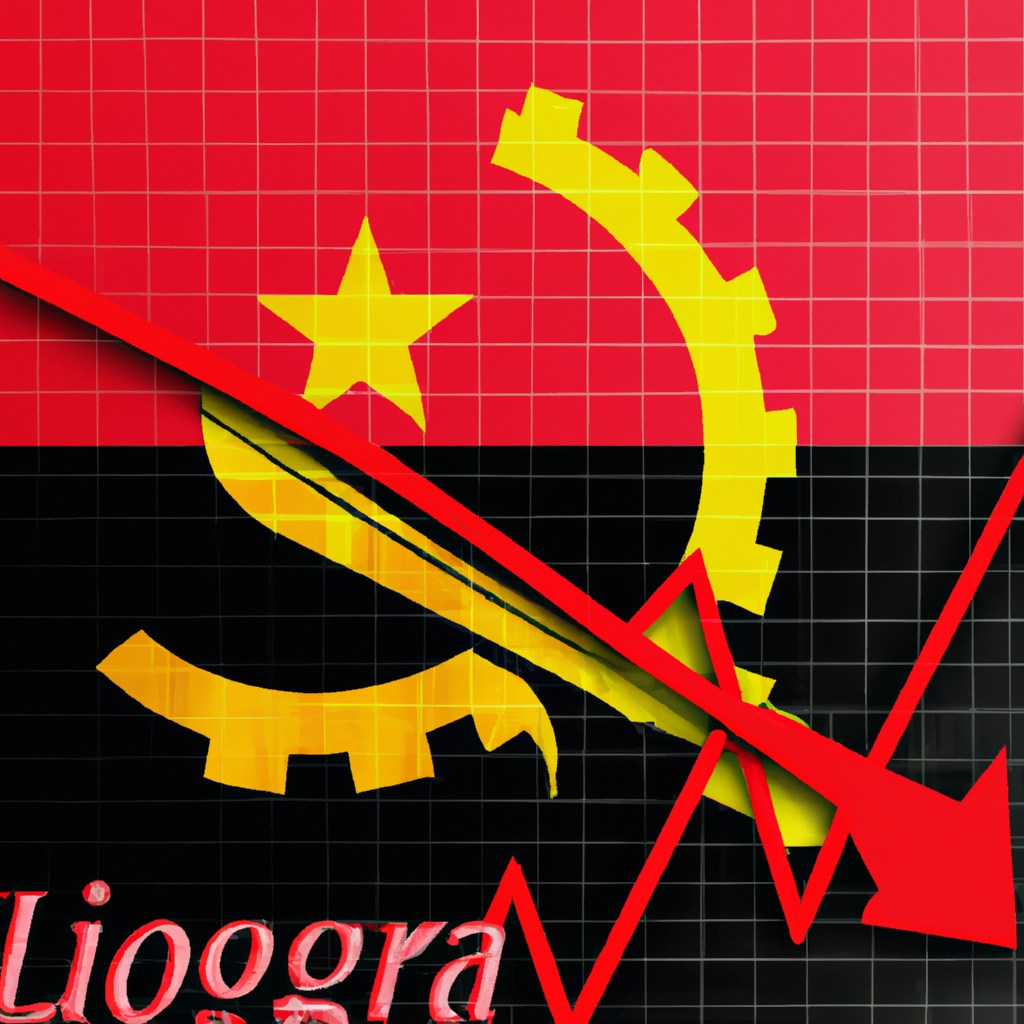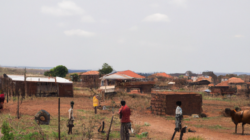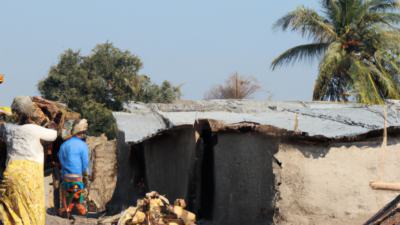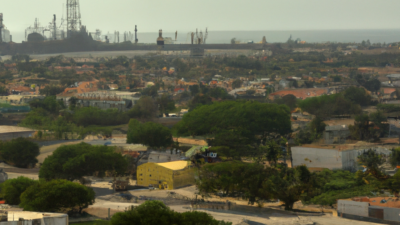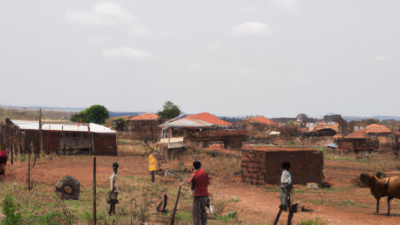In today’s global market, understanding the intricacies of trading economics, particularly in countries like Angola, is crucial for investors and policymakers alike. One key factor that greatly influences the economic landscape in Angola is the country’s interest rate. This article will delve into the significance of interest rates in Angola’s trading economics, exploring how fluctuations in interest rates can impact various sectors of the economy and why it is important for stakeholders to closely monitor these changes.
1. Overview of Angola’s Economy
Angola’s economy is heavily reliant on oil production, with the country being one of the top oil producers in Africa. Oil exports account for the majority of government revenue and foreign exchange earnings. However, the economy has been heavily impacted by fluctuations in oil prices in recent years, leading to economic challenges and a need for diversification.
In addition to oil, Angola also has a growing diamond mining industry, as well as other natural resources such as gold and iron ore. Agriculture is another important sector, with the country producing crops such as coffee, sugar, and corn. However, the agricultural sector is largely subsistence-based and not as developed as other sectors.
Despite its natural resource wealth, Angola faces significant economic challenges, including high levels of poverty and unemployment. The country also struggles with corruption, poor infrastructure, and a lack of skilled labor. The government has implemented economic reforms in recent years to address these issues and attract foreign investment.
Overall, Angola’s economy is in a period of transition as the government works to diversify away from oil dependence and improve economic stability and growth.
2. Impact of Interest Rates on Trading in Angola
Interest rates play a crucial role in determining the cost of borrowing money and the potential returns on investments in Angola. In the context of trading, fluctuations in interest rates can have a significant impact on the overall economic environment and the performance of businesses.
When interest rates are low, borrowing becomes cheaper, which can stimulate economic activity and encourage businesses to invest in expanding their operations. This can lead to increased demand for goods and services, potentially boosting trading volumes and driving up stock prices.
Conversely, when interest rates are high, borrowing costs increase, making it more expensive for businesses to finance their operations and investments. This can result in a decrease in consumer spending, lower business profits, and a decline in trading activity.
Additionally, changes in interest rates can also affect the value of the local currency, which can impact import and export prices. A stronger currency can make imports cheaper but can also make exports more expensive, potentially affecting the competitiveness of local businesses in the global market.
Overall, the impact of interest rates on trading in Angola is complex and multifaceted, with both positive and negative implications depending on the prevailing economic conditions and market dynamics. It is essential for traders and investors to closely monitor interest rate movements and their potential implications on trading activities to make informed decisions and manage risks effectively.
3. Historical Trends in Angola’s Interest Rates
Angola’s interest rates have experienced significant fluctuations over the years due to various economic and political factors. In the early 2000s, Angola’s interest rates were relatively high, reaching double digits as the country struggled to recover from a long period of civil war. The government implemented tight monetary policies to stabilize the economy and control inflation, leading to high interest rates to encourage saving and discourage borrowing.
However, as Angola’s economy began to grow and stabilize in the mid-2000s, interest rates started to decline. The government focused on attracting foreign investment and promoting economic development, leading to a more accommodative monetary policy and lower interest rates. This helped stimulate economic growth and improve access to credit for businesses and individuals.
In recent years, Angola has faced challenges such as a decline in oil prices and the impact of the COVID-19 pandemic, which have put pressure on the country’s economy and led to an increase in interest rates. The government has had to tighten monetary policy to control inflation and stabilize the exchange rate, resulting in higher interest rates to curb borrowing and maintain financial stability.
Overall, Angola’s interest rates have followed a trend of high volatility, reflecting the country’s economic and political challenges. Moving forward, it will be important for the government to continue implementing sound economic policies to ensure stability and sustainable growth in the financial sector.
4. Factors Influencing Interest Rate Decisions in Angola
There are several key factors that influence interest rate decisions in Angola. One of the primary factors is the country’s inflation rate. High inflation rates can erode the value of the currency and lead to higher interest rates in an effort to combat inflation. The Central Bank of Angola closely monitors inflation levels and adjusts interest rates accordingly.
Another important factor is the country’s economic growth and stability. A strong and stable economy can lead to lower interest rates, as there is less need to stimulate growth through higher interest rates. On the other hand, a weak economy may require higher interest rates to attract foreign investment and stabilize the currency.
External factors such as global economic conditions and international interest rates also play a role in influencing interest rate decisions in Angola. Changes in global economic conditions can impact Angola’s economy and currency, leading to adjustments in interest rates to maintain stability.
Political factors can also influence interest rate decisions in Angola. Political instability or uncertainty can lead to higher interest rates as investors seek higher returns to compensate for the increased risk. On the other hand, a stable political environment can lead to lower interest rates as investors feel more confident in the country’s economy.
Overall, a combination of domestic and external factors play a role in shaping interest rate decisions in Angola. The Central Bank of Angola carefully considers these factors when making decisions to ensure stability and growth in the country’s economy.
5. Effects of Interest Rate Changes on the Angolan Economy
Interest rate changes can have a significant impact on the Angolan economy. When interest rates are raised, borrowing becomes more expensive for businesses and consumers. This can lead to a decrease in consumer spending and business investment, ultimately slowing down economic growth.
On the other hand, when interest rates are lowered, borrowing becomes cheaper, which can stimulate economic activity. Lower interest rates can encourage businesses to invest in new projects and expand their operations, leading to an increase in job creation and overall economic growth.
Additionally, interest rate changes can also affect the value of the Angolan currency. When interest rates are raised, the value of the currency tends to appreciate as foreign investors are attracted to higher returns on investments in Angolan assets. Conversely, when interest rates are lowered, the value of the currency may depreciate as investors seek higher returns elsewhere.
Overall, interest rate changes play a crucial role in shaping the Angolan economy. It is important for policymakers to carefully consider the potential effects of interest rate adjustments and their implications for economic growth, inflation, and exchange rates.
6. Strategies for Trading in Angola’s Interest Rate Environment
Angola’s interest rate environment can be challenging for traders due to its high volatility and fluctuations. However, there are several strategies that traders can implement to navigate this environment successfully.
One strategy is to closely monitor the central bank’s monetary policy decisions and interest rate announcements. These announcements can have a significant impact on the market, so traders should be prepared to adjust their positions accordingly.
Another strategy is to diversify trading instruments and not solely rely on interest rate derivatives. By trading a mix of different instruments, such as equities, currencies, and commodities, traders can spread their risk and potentially minimize losses.
Additionally, traders can use technical analysis to identify trends and patterns in the interest rate market. By analyzing historical data and chart patterns, traders can make more informed decisions about when to enter or exit trades.
Lastly, it is crucial for traders to stay updated on geopolitical and economic developments in Angola that could impact interest rates. By staying informed and being proactive, traders can better anticipate market movements and adjust their strategies accordingly.
Overall, trading in Angola’s interest rate environment requires a combination of vigilance, diversification, technical analysis, and staying informed. By implementing these strategies, traders can improve their chances of success in this challenging market.

